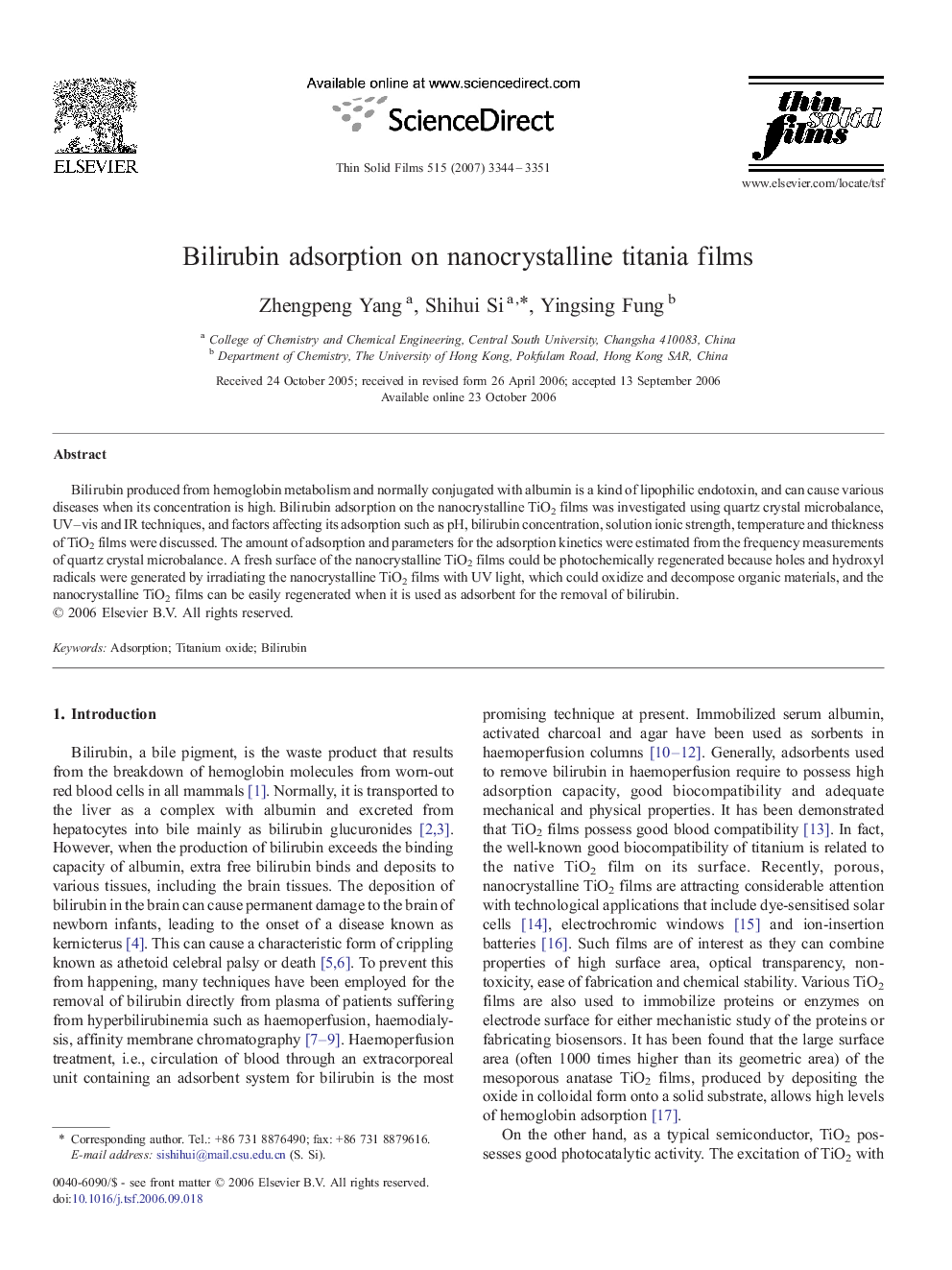| Article ID | Journal | Published Year | Pages | File Type |
|---|---|---|---|---|
| 1672960 | Thin Solid Films | 2007 | 8 Pages |
Bilirubin produced from hemoglobin metabolism and normally conjugated with albumin is a kind of lipophilic endotoxin, and can cause various diseases when its concentration is high. Bilirubin adsorption on the nanocrystalline TiO2 films was investigated using quartz crystal microbalance, UV–vis and IR techniques, and factors affecting its adsorption such as pH, bilirubin concentration, solution ionic strength, temperature and thickness of TiO2 films were discussed. The amount of adsorption and parameters for the adsorption kinetics were estimated from the frequency measurements of quartz crystal microbalance. A fresh surface of the nanocrystalline TiO2 films could be photochemically regenerated because holes and hydroxyl radicals were generated by irradiating the nanocrystalline TiO2 films with UV light, which could oxidize and decompose organic materials, and the nanocrystalline TiO2 films can be easily regenerated when it is used as adsorbent for the removal of bilirubin.
